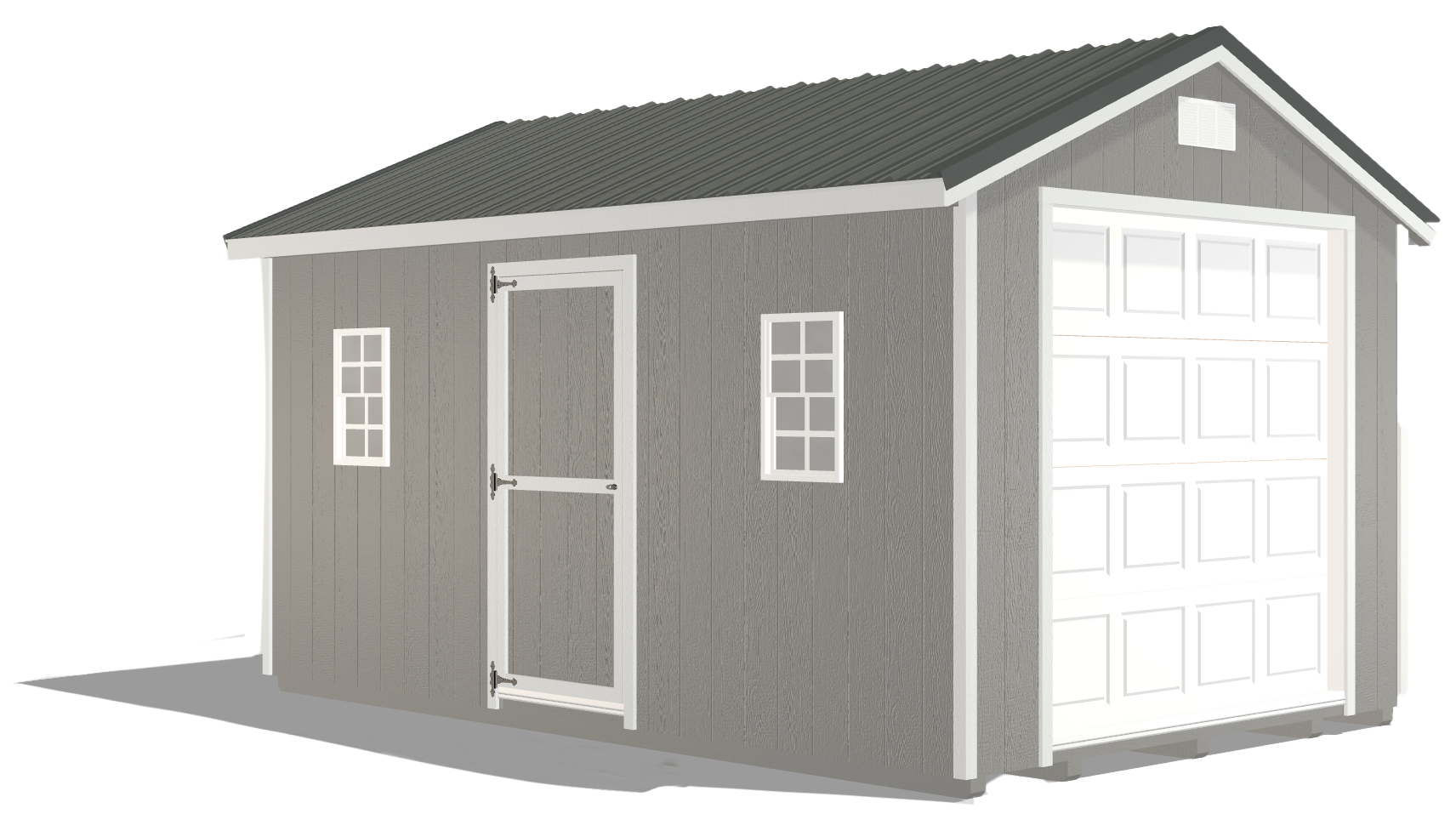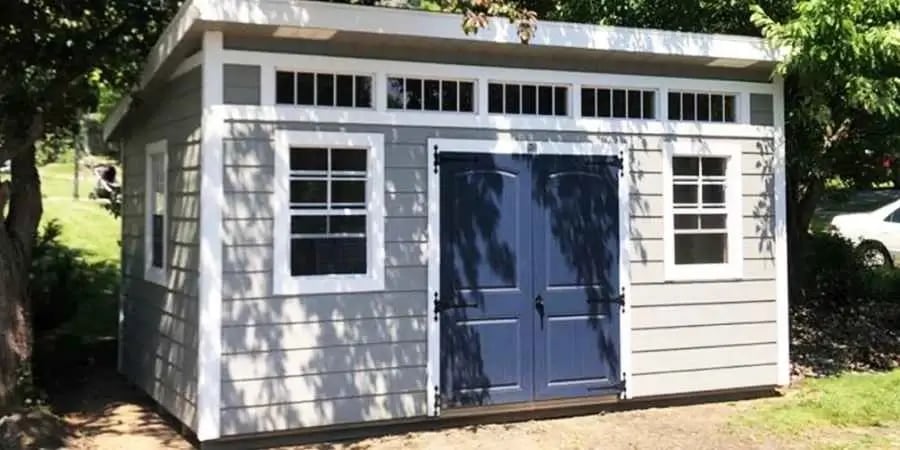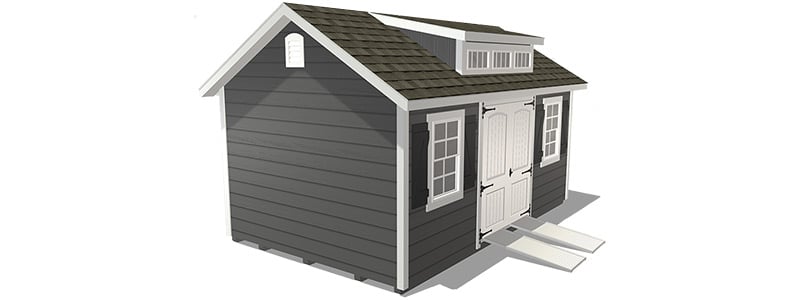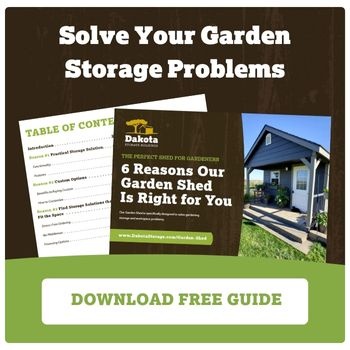Interior Lighting Options For Your Backyard Garden Shed
by Dakota Storage Buildings, on July 29, 2020
From natural lighting to LED to solar lights, there’s an option for every need and budget.
When it comes to lighting for garden shed options, the possibilities may feel overwhelming. Since a backyard shed is such a versatile structure, many of your lighting decisions will be informed by the ways you want to use your shed.
It’s also wise to think ahead to additional purposes your backyard shed may be used in the future. For instance, you might decide to repurpose your garden shed as a hobby workshop one day, which could change your lighting needs. Plus, if you don’t plan on staying in your house for the long haul, it might make sense to go with a versatile lighting solution that will appeal to a variety of future homeowners.
To help light the way, we’ll highlight popular options and address primary considerations when selecting shed lighting solutions. But first, let’s take a look at some of the most common options, including LED lighting solutions and solar lights.
Types of Shed Lighting
There are two primary types of shed light sources: natural light and artificial light. Depending on your needs, you may be able to get by with one or the other, but many people opt to use a combination approach.
Natural Shed Lighting
Relying solely on the sun for interior shed lighting means you pay upfront for lighting costs. Adding windows, dormers, or skylights not only adds a wonderful source of light to your garden shed – it’s also aesthetically pleasing.
- Windows – Allows natural light and air to flow through your shed while keeping the bugs out. Choose an insulated variety and add shutters to make your shed cozy inside and out.
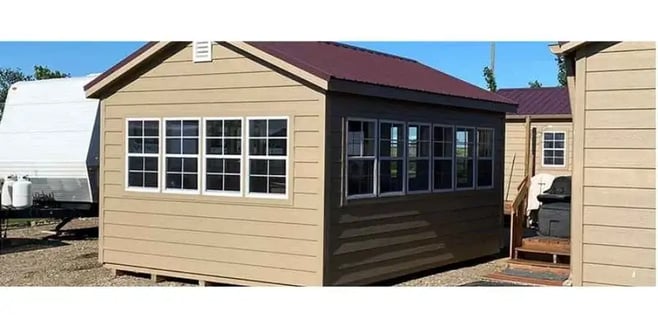
- Door windows – Here’s a simple way to let in natural light, without adding a lot of extra cost. Simply choose a door that includes a window, and you’re good-to-go.
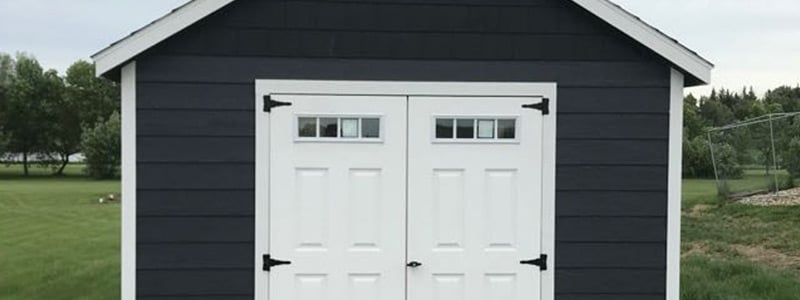
- Dormers – These windows that pop-up from the roof are commonly used to increase the usable space in a loft. They offer a great way to let in natural light and add visual interest as well.
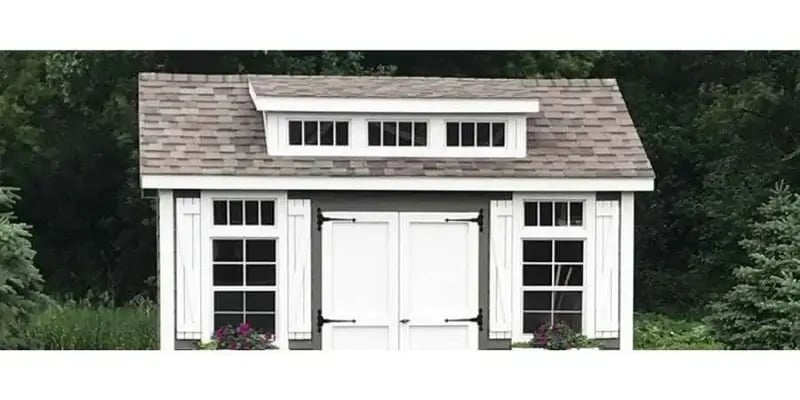
- Skylights – If you really want to maximize your natural light, adding a skylight may be a great choice. Look for a high-impact, leak-resistant option that will let light in but keep rain out.
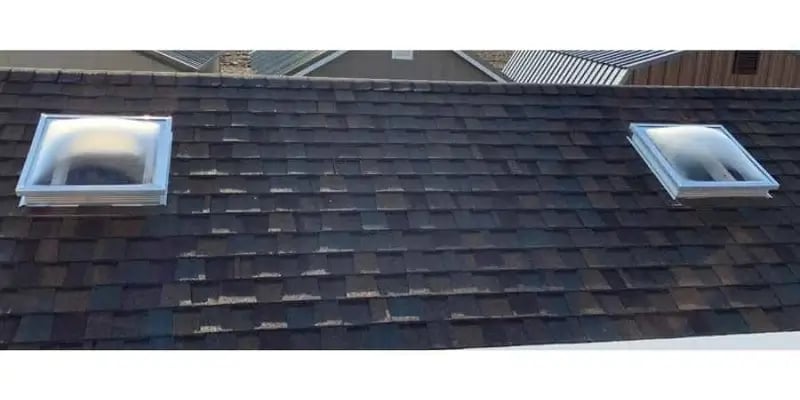
PRO TIP: To give your natural light a boost, paint the inside of your shed white or a light color. Bright paint reflects the available light and improves light efficiency.
Artificial Shed Lighting
If you want to putter around inside your shed after sunset or on a dark, cloudy day, natural lighting may not be a complete solution. In most cases, it’s probably a good idea to have a secondary solution in place that relies on an energy source for on-demand lighting.
When choosing artificial lighting, most experts recommend choosing LED lighting solutions over fluorescent or CFL bulbs, since LED bulbs are 30% more efficient. LED lighting once felt bright and sterile, but is now available in warmer options as well.
- Solar Lighting – Adding solar lighting to your garden shed can be a great way to avoid running electricity to your shed. There are several inexpensive options available, from simple portable solar lights to indoor solar barn lights to solar LED rope lights. Or, if you really want to get fancy, you can transform your garden shed into a solar-powered workshop.
There are, however, a few limits to solar lighting for an indoor space, including less natural light in the winter months — but strategic placement can help you get the most out of these garden shed lights.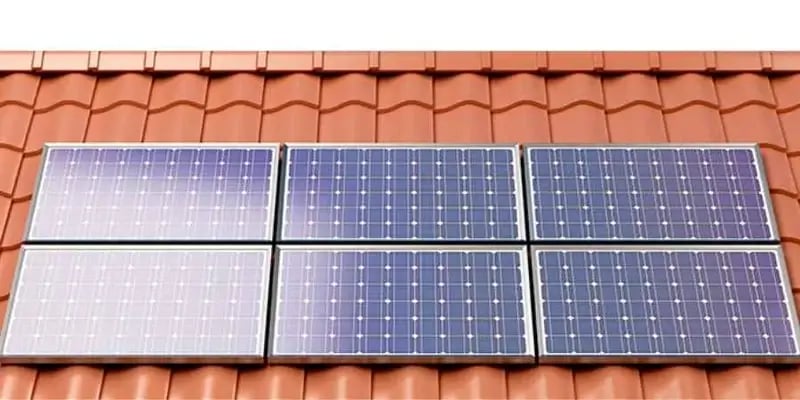
- Battery-Powered Lighting – Much like solar lighting, battery-operated lights are an inexpensive, and often conveniently portable, shed lighting option. No electrical outlet is needed, and no professional installation experience is required. Choose from LED string lights, puck lights, cabinet-style lights, and even LED wall sconces.
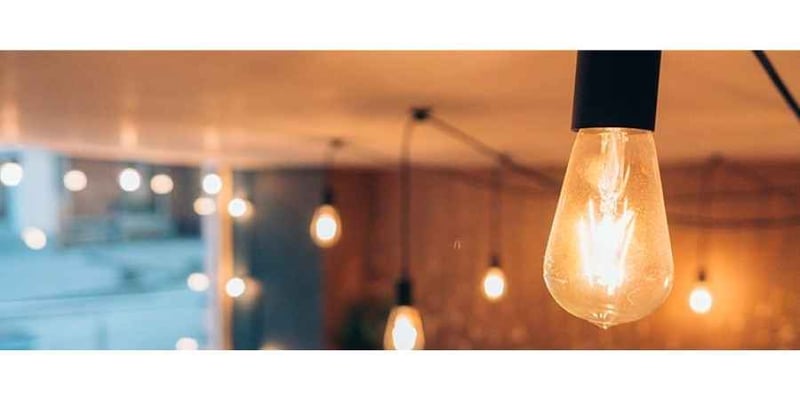
- Electrical Lighting – If you already have the need to run electricity to your backyard shed, using electric lighting may be a no-brainer. However, wiring a shed does take some basic electrical knowledge or the help of a handyman or electrician. Depending on your power requirements, you’ll need to decide whether you need 120v (lights, outlets, appliances) or 240v (larger equipment).
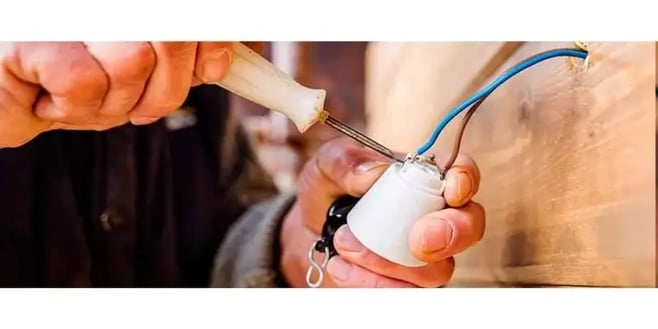
Going the electrical route may come with some extra cost and a few more hoops to jump through, but it can considerably expand your lighting style choices and the usability of your shed. You’ll never need to depend on sunny weather, nor worry about replacing dead batteries. With electricity to draw upon, you’ll be able to charge cordless garden tools, add a small refrigerator for cool drinks in the summer, or even include a space heater to make your shed usable all-year-round.
Shed Lighting Considerations
Choosing the best lighting solution for your backyard shed will depend on several factors. In addition to considering your budget, asking yourself the following questions might point you in the right direction.
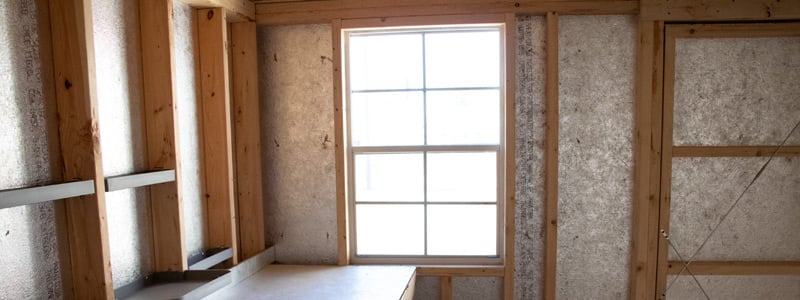
How much time do I plan to spend in my shed?
If you’re mostly using your shed for storage and occasionally popping in and out for a garden tool, natural light might work for you. You could add a few portable solar or battery-powered lights, with little investment. A motion-sensing closet light might work well if you have an occasional evening need. On the other hand, if you’re hoping to use your shed as a hobbyist get-away, you’ll probably want a more robust solution.
How much available sunlight is in my location?
If you have a lot of tree cover or your shed could be shadowed by a neighboring house or building, natural light and solar light options may not work well for you. Also, the climate of your area should be considered in terms of how much light you’ll have if you plan to use the shed year-round.
Do I have other electricity needs?
Adding electricity is definitely a more involved lighting solution for your shed, but if you want to charge power gardening tools, plug in appliances, or dream of using your shed in the evening or winter months, there may be no getting around the need for electrical wiring. Bonus: Adding electricity can make your shed more versatile for future use and more attractive to buyers when you sell the home.
How much light do I need?
If you’d like to use your garden shed to store potted plants in the winter, windows or skylights might supply needed light, or you could use LED grow lights. Or perhaps you’d like the option of adding a workbench and being able to tinker with your lawn mower or weed eater – a reliable light source would be important. Think ahead to all the ways you would like to use your backyard garden shed, then proceed accordingly.
Customize Your Backyard Garden Shed
As you read this article, you may have started thinking that it’s time to upgrade your backyard garden shed. If so, Dakota Storage Buildings can help you take the next step. We offer a collection of high-quality backyard shed options that are fully customizable to meet your needs and style preferences. Explore our collection today or use our online shed builder to create the perfect storage building that’s exactly the way you want it — including dormers, windows, skylights, and more.


















